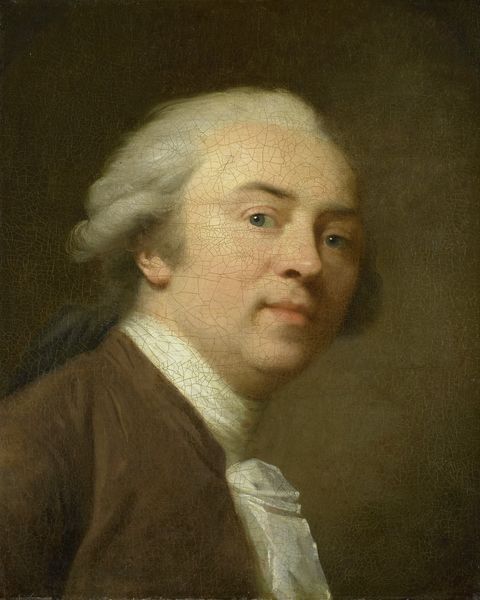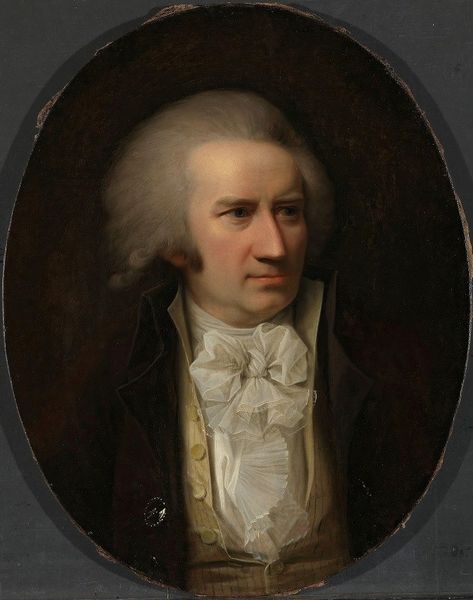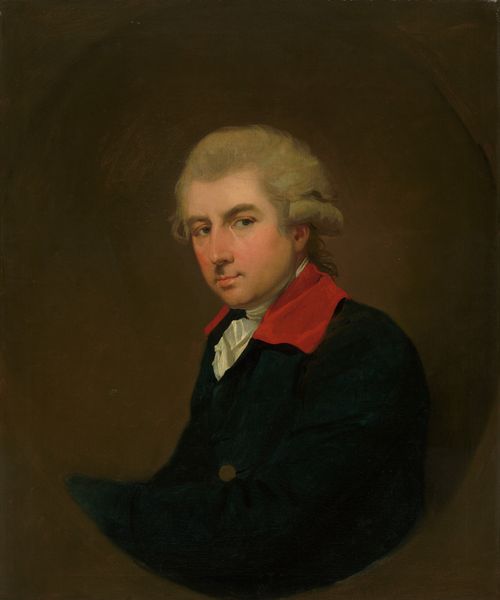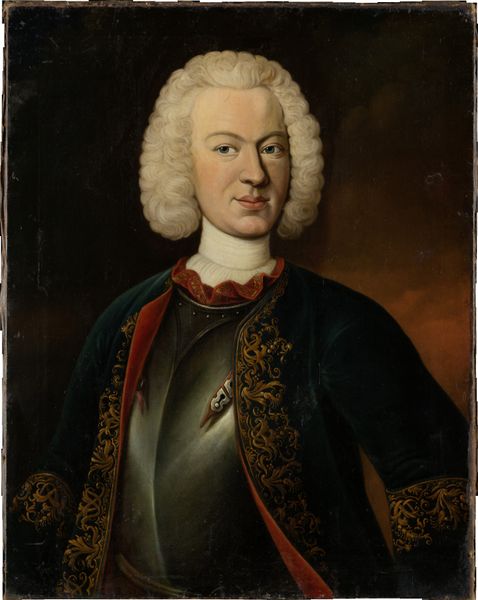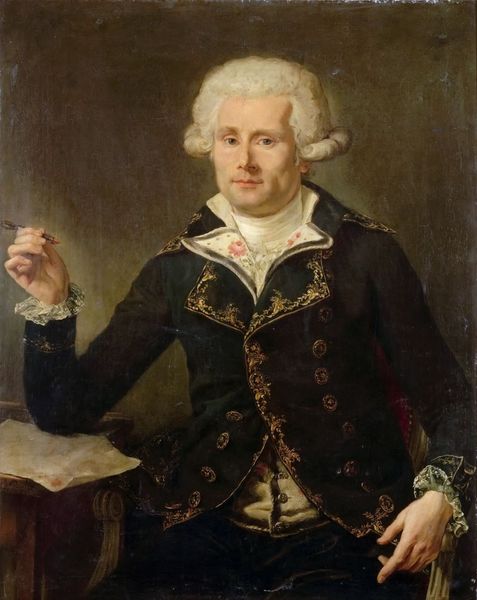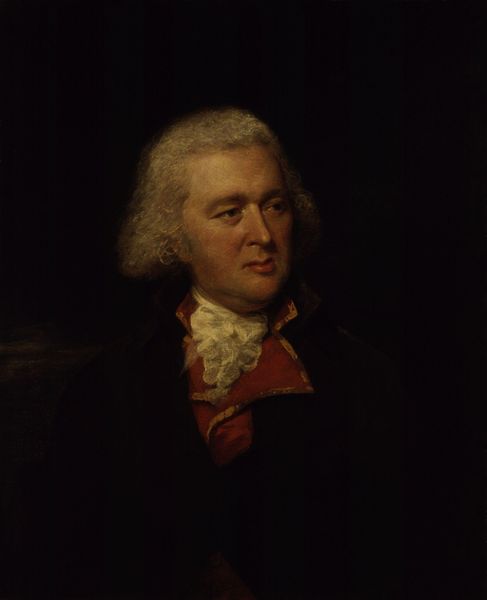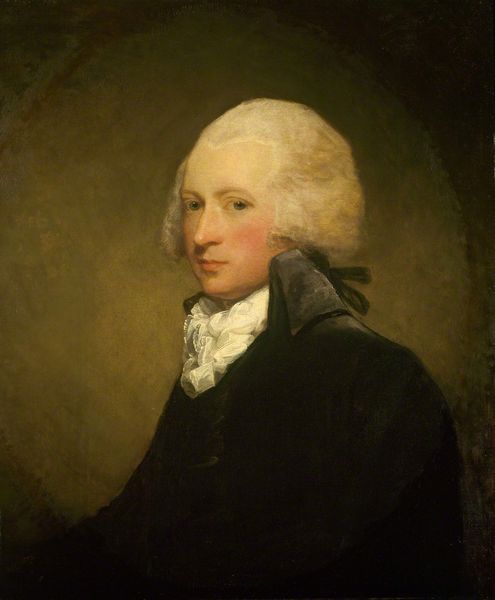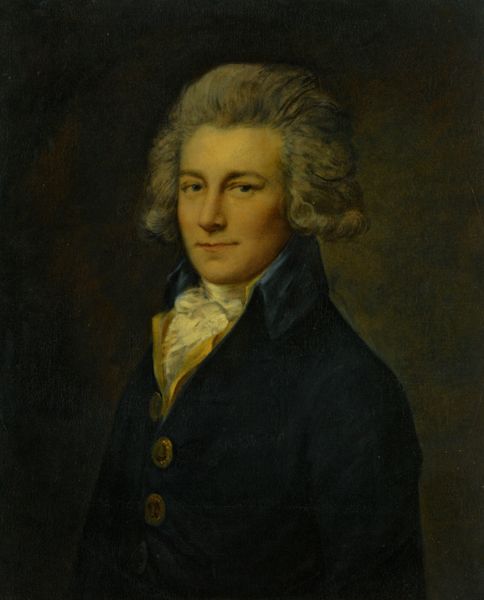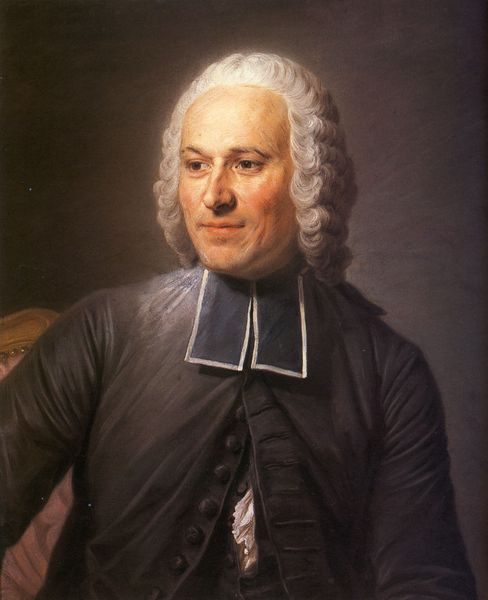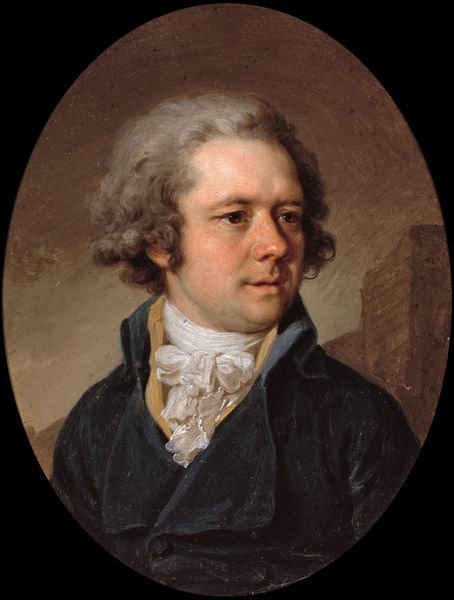
painting, oil-paint
#
portrait
#
neoclacissism
#
painting
#
oil-paint
Dimensions: overall: 63.5 x 47.9 cm (25 x 18 7/8 in.) framed: 81.9 x 66.3 x 7.6 cm (32 1/4 x 26 1/8 x 3 in.)
Copyright: National Gallery of Art: CC0 1.0
Curator: We’re now looking at John Peck, a portrait painted around 1795 by John Johnston, using oil paint. Editor: There's a peculiar stillness to this portrait, isn’t there? The subdued palette and controlled brushstrokes give it a rather severe and self-conscious mood, almost as if the subject is unaccustomed to sitting. Curator: Yes, the muted tones certainly set a tone of solemnity, and it does adhere to neoclassical ideals, favoring a reserved presentation over overt emotional displays. Note the symmetry and the rather linear quality to the composition. Editor: Considering its date, the late 1790s, one has to think about the implications of portraying masculinity in this manner. A period of revolution and societal upheaval demanded individuals willing to transgress traditional social norms. The clothing of Peck and his stern composure indicate otherwise. He appears steadfast, unyielding, in what might have been perceived at that time as old ways of being. Curator: His pose certainly exudes a calculated self-possession. You're right. We see this control echoed in the limited color range as well. Observe the near absence of vibrant colors outside of skin tones. It directs the focus precisely to the man’s face, capturing his physiognomy and projecting, perhaps, the sitter’s elevated position in society. Editor: The slightly rosy cheeks and the gentle folds around the mouth do provide some depth and warmth against the darker jacket. But those qualities of warmth and depth are overwhelmed by his presentation overall. Curator: An interesting tension emerges between Johnston’s execution of formal technique, classical portraiture and, as you said, the subject’s demeanor within that execution. Thank you, that contrast enhances my understanding greatly. Editor: Thank you. I’m always looking to view such works as mirrors reflecting shifting social tides and what the subject meant to reflect back through their very image.
Comments
No comments
Be the first to comment and join the conversation on the ultimate creative platform.
